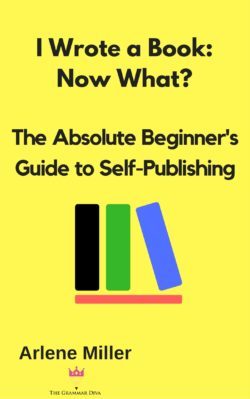Lay and Lie Explained
 The Best of the Grammar Diva
The Best of the Grammar DivaOriginally posted June 15, 2013
Lay and lie are two of the most confusing verbs in the language. Hopefully, after reading this blog post, you will finally be confident of the difference.
Let’s start here:
I read the books.
I play Monopoly.
He buys a shirt.
Look at the bolded words in the above sentences. They all receive the action of the verb. What do I read? Books. What do I play? Monopoly. What does he buy? A shirt. These words are all nouns (things) and are called direct objects.
Now look at these sentences:
I read all the time.
I play in the park.
He buys with a credit card.
What do I read? What do I play? What does he buy? These sentences don’t give the answer. They may answer the question where? (in the park), when? (all the time), or how? (with a credit card), but there is no noun (or pronoun) that answers what ? (or whom). In other words, those sentences, although they use the exact same verbs, have no direct objects.
Verbs that have direct objects are called transitive verbs. Verbs that have no direct object are called intransitive verbs. Obviously, from the examples, the same verbs can be either, depending upon how they are used in the sentence. Some verbs, however, are usually transitive, and others are usually intransitive.
What on earth does this have to do with lay and lie?
Here we go: Lay is a transitive verb. Lie is an intransitive verb. Simply put, you must lay something.
Here are some examples of lay used correctly:
I lay my blanket on the sand. (lay a blanket)
Please l ay your books on the table. (lay books)
I am laying my pen here, so I don’t forget it. (laying my pen)
Here are some examples of lie used correctly:
I lie on the sand to get a tan.
The books are lying on the table.
My pen is lying on the desk.
*Notice that lay and lie have nothing to do with whether you are talking about people or objects. Objects can lie as well as people!
But wait! We have talked about only the present tense. The past tense is where things get complicated.
First, let’s talk about the verb lay, which is pretty simple.
Today, I am laying my blanket on the sand. (Present tense – lay or laying ).
Yesterday, I laid my blanket on the sand. (Past tense – laid or was laying )
Every day this week, I have laid my blanket on the sand. (Past participle form, used with have or had – have laid or have been laying )
Now, let’s talk about lie which is a little weirder:
Today, I am lying on the sand. (NOT laying – present tense – lie or lying )
Yesterday, I lay on the sand. (Yup! The past tense of lie is lay . They did it to confuse us! Lay or was lying )
Every day this week, I have lain on the sand. (Past participle form, used with have or had . Yes, lain is a word! Have lain or have been lying)
Here is the verb LAY, completed conjugated, all six tenses:
Present: lay or laying
Past: laid or was laying
Future: will lay or will be laying
Present Perfect: have laid or have been laying
Past Perfect: had laid or had been laying
Future Perfect: will have laid or will have been laying
And here is the verb LIE, completely conjugated, all six tenses:
Present: lie or lying
Past: lay or was lying
Future: will lie or will be lying
Present Perfect: have lain or have been lying
Past Perfect: had lain or had been lying
Future Perfect: will have lain or will have been lying
There! I hope this post has cleared up some of your confusion about lie and lay. As always, I welcome any questions or comments. Now, I think I need another cup of coffee! Happy weekend!
Happy Holidays from the Grammar Diva!
Two books coming out within the next few weeks!





